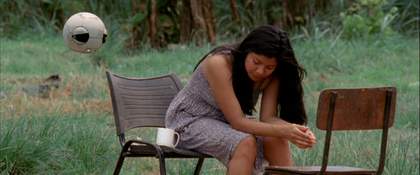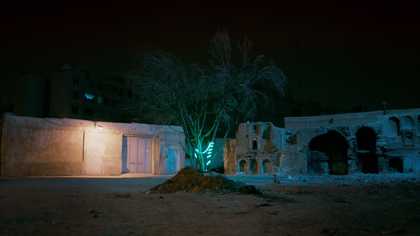This series of artist films presents scenarios that grasp potential, build up, and let down in love. Within each, the space between the lover and their object of desire is reconsidered.
Opening the series, Michael Snow's A to Z is a cut-out animation of domestic objects and furniture. At night, in the absence of humans, cups and saucers knock over one another. Two chairs meet, sway and dance, rubbing and caressing each other under a moon. A playful pondering on love, this introduction invites us to reflect on non-human forms of kinship.
The interior is at the core of Marge Monko's Dear D, in which objects on screen take central stage. The film presents a narrator composing a love letter to a friend. Throughout the video, windows open and close, the film reflexively circling back to its own image-making process. By applying citations, Monko expands to other theories of attraction and longing.
The distance between loved ones is tangible in Maryam Tafakory’s Irani Bag. A split-screen video essay, the film deconstructs a cinematic motif in post-revolution Iran, using excerpts from films produced between 1990 and 2018. In them, the passing of a bag serves as a proxy for direct contact, highlighting the distance between two characters in love. Reflecting on a form of mediated intimacy enabled by moving image, this delicate collage-work interweaves poetry, documentary, and archival footage.
This push and pull parallels the computer-generated Galaxy in Dagmar Schürrer's film. An animated story generated by an algorithm tells the meeting of two characters, Touch and Long Swipe, who give their names to the programme. Through slight deviations in language, the film reveals how stories are expected to be told in a technologically-driven world.
Gabriel Abrantes's Artificial Humours closes the programme with a touch of romantic comedy: boy meets girl, loses her, and returns for her love... Our expectations are however subverted by a kinship that expands beyond the human realm. Blending traditions inherent in stand-up comedy and documentary, the film follows a young indigenous girl from the Xingu National Park to São Paulo, Brazil. There, she falls in love with “Andy Coughman,” a flying robot modelled after René Magritte’s spherical bells.
Seen together, the films in this programme invite us to reflect on our so-called postmodern condition and the space held for intimacy, touch, and love in today’s world.


